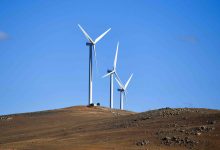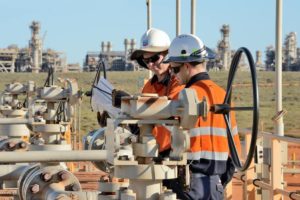The price of Australia’s shift to renewables will not be cheap, the federal treasurer has confirmed, but it won’t cost nearly as much as it did to set up Australia’s fossil gas industry – and it will be far cheaper than the cost of living under runaway global warming.
Climate change and the decarbonisation of the energy grid will both play major roles in shaping Australia’s future economy, according to the latest Intergenerational Report from federal treasury – and how we find it in 40 years will depend heavily on how quickly we move to renewables.
In the sixth edition of the federal government’s 40-year forecast of the national economy and budget, the Albanese government’s treasurer Jim Chalmers has dedicated at least 27 pages (an entire chapter) to climate and energy.
“Climate change will have profound impacts on the economy and society. It will affect where
and how Australians choose to live and work, food and energy security and our environment,” the report says.
“The government is taking strong action to respond to these challenges and position Australia to maximise opportunities from the global net zero transformation.”
A major chunk of this action, of course, will focus on the urgent decarbonisation of the electricity sector, which is – as the report notes – the largest single source of Australia’s greenhouse gas emissions.
According to the report, using Australian Industry Energy Transformations Initiative estimates, the energy transition together with industrial decarbonisation will require an additional $225 billion of investment by 2050 above business-as-usual levels.
But the report also notes that this sort of spending has been seen before in Australia’s energy market.
“This level of investment is of a similar scale to that which occurred during the establishment of Australia’s gas industry, where $305 billion was invested in LNG projects over a shorter period of 13 years,” it says.
Meanwhile, the economic cost of not weaning our energy systems off fossil fuels in time to stop runaway global warming doesn’t bear thinking about. Although Chalmers has given it a shot.
“If global temperatures were to increase by up to 3°C or over 4°C, without adaptive changes to current ways of working, Australia’s aggregate labour productivity levels could decrease by 0.2 to 0.8 per cent by 2063,” the report says.
“This is a significant economic cost, reducing economic output over this period by between $135 billion and $423 billion in today’s dollars, through the direct impacts of higher temperatures on labour productivity.”
On the flip side the report estimates that if global action limits temperature increases to 2°C, Australia could benefit from up to an additional $155 billion in GDP in today’s dollars, relative to a scenario where temperatures increase up to 3°C.
“This is equivalent to 26 to 41 million more hours of work in 2063, underscoring the value of timely action to reduce emissions.”
The report also predicts that the increased frequency and severity of natural disasters will blow out recovery funding payments more than three-fold by 2063 and the tourism industry will also take a significant hit if temperatures soar past the 2°C.
If warming is limited to 1.5°C, demand for Australian thermal coal would fall to one per cent of current levels by the 2060s but demand for lithium – a cornerstone ingredient of the transition to clean energy and transport – would jump eight-fold.
“The Intergenerational Report is all about making the big shifts in our economy and our society work for us and not against us,” Chalmers said.
“Our economic plan is designed to make Australian businesses and Australian workers beneficiaries not victims of the shift to cleaner, cheaper energy.”










